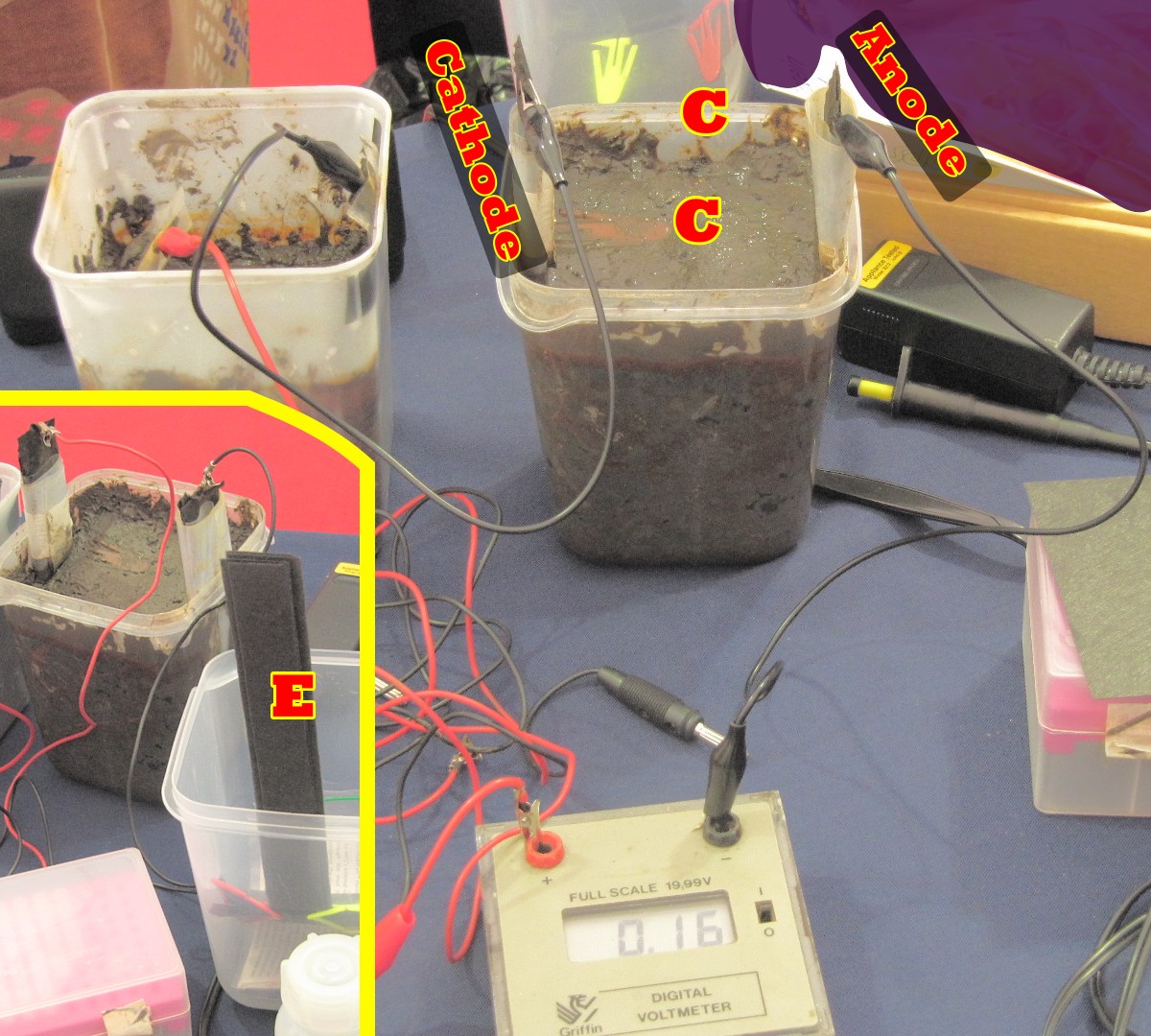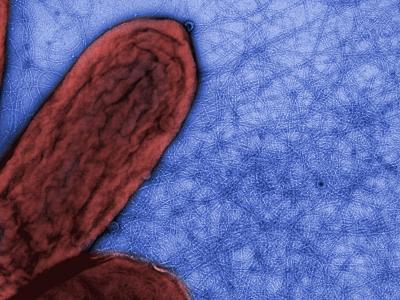Going round the exhibition of the Association for Science Education always
leaves me with a few small challenges, such as “how much can I really take in of
what an exhibitor is telling me?” and “how much school science do I really
understand?” For example, on the same table as the Toilet
Roll Fungus, part of the NBCE exhibit, I came upon
two fuel cells. I’ve had to think quite hard before writing this one
up
The first of these was the yeast cell. It’s sitting there in the
middle of the picture, a small tank full of dark blue liquid with two wires
coming out of it to power an odd motor-driven device at the bottom. Behind it
is a tin of Allinson dried yeast, a popular brand for baking in the UK. Top and
left are bottles of very dark methylene blue
solution,
(indent)
Methylene Blue is a
dye of very low toxicity, deep blue in its oxidized form and colourless when
reduced. It has so many applications, it could be called ‘the chemical of a
thousand uses’. Further to the left there is a yellow solution of what used to
be called potassium ferricyanide, but is now more properly called potassium
hexacyanoferrate(III).
From an article The Microbial Fuel
Cell comes this diagram. The yeast is respiring, with glucose as fuel.
Given sufficient heat, the glucose would burn in atmospheric oxygen anyway, but
the respiratory system does two things: (1) it is catalytic, and so allows the
overall reaction to proceed at lower temperatures, (2) it taps off the energy
released to be used for the yeast cell’s own purposes, and in animals for
movement and digestion. In this cell, electrons from the methylene blue at a
higher potential are passed through an electrical circuit in order to do some
work — not much in this case, the motor is there for show rather than doing very
much.

The
overall reaction in this case is glucose being oxidized by the
hexacyanoferrate(III), which becomes hexacyanoferrate(II). I suppose that in
the process, the yeast is losing much of the value of the glucose.
This
cell serves only educational purposes, albeit very well — it’s given me insight
into things I studied as a student but didn’t grasp well because of a forest of
details. The next one perhaps has perhaps less immediate educational value in
terms of science studied, but it’s more fun and has a practical application.
One goes to one’s nearest pond or lake, retrieves some smelly mud from the
bottom (wet garden soil won’t do) and makes these mud cells. Here, in the main
part of the diagram, are two connected in series. They are filled with mud from
the bottom of the university lake.

To see what they
are made of, first look at the inset bottom left of picture. E is a
carbon fibre electrode, long and thin but with a square paddle hidden at the
bottom of the pot. Behind it is a single made up cell, with a red wire coming
out of the cathode (positive) and a black wire from the anode
(negative)*.
 However,
However,
the working component of these cells is again a microorganism, this time Geobacter. The genus was
first discovered in 1987 in the Potomac River, which sticks in my mind as
marking the frontier between the Union and Confederate forces in the American
Civil War. The species pictured right is the first discovered,
G.metallireducens. This is surrounded by a mass of flagella,
which enable it
to swim and find food. But it also has a few long pili, but originally
it was not known what these are for. These bacteria are anaerobic, and
different species derive their energy by transferring electrons along their respiratory chain to a variety of oxidizers, such as ferric oxide (rust) and uranium. At present the star of the
show is Geobacter
sulfurreducens, found in 2003 in a soil sample contaminated by
hydrocarbons in Oklahoma. It uses organic matter for food, but instead of
oxygen can burn its food using among other things sulfur or sulfates, giving
rise to smelly hydrogen sulfide.
 The first major use of Geobacter was
The first major use of Geobacter was
seen to be bioremediation, since they can live in all sorts of muck. But
G.sulfurreducens can be used in microbial fuel cells that are much
more efficient than the yeast cells above. A new strain KN400
might even power batteries attached to turtles to track their migration. This
arises because the pili, although made of protein, are conductive like metallic
nanowires. Indeed, G.sulfurreducens might even bridge
the gap between solid state electronics and biological
systems.
But back to the cells, particularly the one at top
middle of picture. The paddle of the cathode is just under the mud at the top,
attached to the electrode shaft by a clip C, while the paddle of the
anode is at the bottom, away from oxygen so the bugs can do their
work.
Such wonderful things in science education these days, perhaps with
things like this I might have had a better grasp of many subjects. Kids today —
they don’t know when they’re well off!
* I used to find the
definitions of Cathode and Anode quite
confusing. For example, the anode of a battery is the negative terminal,
whereas in a vacuum tube the anode or ‘plate’ is positive. Even worse, in a
recharging battery, the two terminals swap roles as anode and cathode. The two
Wikipedia links just given are helpful for sorting this
out.
Further Reading
power, from the American Chemical Society
supercapacitors, from the Geobacter Project.



